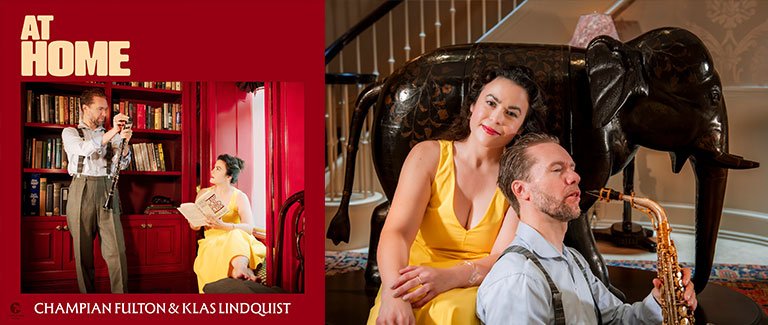Album review: Benny Green – Solo

Benny Green’s Solo (Sunnyside, 2023) is the veteran pianist’s long awaited return to unaccompanied performance, his first true solo album in twenty years. The 40 minute set features eleven tracks, a mix of Green originals and carefully chosen compositions by jazz masters such as Thelonious Monk, Cedar Walton, Oscar Peterson and others. Critics note that Green plays “with his heart,” and that his approach here is thoughtful, emotionally transparent and deeply melodic. Recorded over two days in late 2022, Solo has been praised for its warm, intimate sound and Green’s effortless command of bebop, post-bop and swing traditions.
Background & Concept
After decades leading trios and ensembles, Green took advantage of the 2020s pause in touring to focus on solo piano. He chose pieces “taken off the beaten track” by pianists who influenced him, ranging from Horace Silver’s soulful “Lonely Woman” to McCoy Tyner’s meditative “Sunset,” plus two originals called “Jackie McLean” and “Blue Drew.” In selecting repertoire, Green aimed to honor those mentors while interpreting each tune his own way. As one reviewer explains, “Green finds himself reflecting on pieces by pianists who have inspired him over the decades.” The album thus serves as both a tribute and a personal statement, showing Green’s “plush velvet” touch and richly nuanced phrasing.
Highlights and Style
Reviewers singled out several performances as especially moving. For example, Green’s rendition of Silver’s “Lonely Woman” and Walton’s “The Maestro” are described as utterly compelling. In “Rouge” (a Barry Harris tune) and Peterson’s elegiac “He Has Gone,” Green’s playing is noted for its “special depth in rumination,” adding poetry and color to the melodies. In general, critics praise how Green “gets the composer’s mood and emotional intent,” balancing sensitive interpretation with fluent technique. His left hand often plays a gentle stride or block chords while the right hand weaves lyrical lines, a style likened to a “mid-mood” reverie. DownBeat magazine emphasizes that Green’s time is “rock-steady” and “melody-centric,” making the solos feel reflective and transparent. In short, Solo showcases Green’s mature artistry: he swings and grooves when needed but also listens closely to each song’s story.

Reception and Feedback
Critics have greeted Solo with near-universal admiration, praising Benny Green’s return to unaccompanied piano as both timely and timeless. JazzTimes commended the album’s “crystalline clarity,” noting that Green’s touch evokes the intimacy of a live late-night set, yet with the precision of a studio recording. The review highlighted “Sunset,” Green’s take on McCoy Tyner’s classic, as a standout track where “every chord feels like an open window to the pianist’s soul.” Jazzwise echoed this sentiment, awarding Solo four and a half stars and describing Green’s interpretations as “profoundly personal without losing sight of each composer’s original vision.” The magazine pointed out how Green’s exploration of space and silence on tunes like “He Has Gone” creates a powerful emotional resonance, drawing listeners into reflective moments rarely achieved on solo recordings.
All About Jazz went further, calling Solo an “unforgettable journey through jazz piano heritage.” Writer John Kelman argued that Green’s approach balances reverence and innovation: he honors Walton and Monk yet ventures into his own harmonic territory, especially on the originals “Jackie McLean” and “Blue Drew.” Kelman praised Green’s dynamic shading, observing how his softest passages carry as much weight as the louder sections. The review concluded that these originals could stand alongside the standards, thanks to Green’s narrative playing, which makes each note feel part of a larger story.
On mainstream platforms, user reviewers have matched the critics’ enthusiasm. AllMusic users average a 4.7 star rating for Solo, with many citing it as one of the year’s best jazz piano albums. One listener wrote that Green “breathes new life into each melody, making you feel the history behind the notes.” Another noted that the album rewards repeat listens: “On first play, you hear the beauty of the melodies; by the fifth, you catch the subtle rhythmic variations and harmonic twists that make Green unique.” RateYourMusic lists Solo in its Top 50 Jazz of 2023, where community comments emphasize the album’s consistency—no filler tracks, just eleven purposeful performances.

Amazon reviewers reflect similar enthusiasm but also offer practical insights. Several buyers praised the album’s sound engineering, remarking that the recording captures the full range of the piano without harsh highs or muddy lows. A reviewer who listened on vinyl applauded the warmth and “near three dimensional presence” of Green’s instrument, while digital purchasers pointed out that the streaming version maintains this depth, a testament to quality mastering. A handful of comments noted that the album’s introspective nature makes it better suited to quiet listening sessions rather than background music, but even these listeners admitted that the focus required enhances appreciation of Green’s nuanced phrasing.
Social media chatter on Twitter and Instagram further reinforces the album’s impact. Jazz aficionados have shared clip-length videos of Green’s “Lonely Woman,” praising how he transforms Silver’s haunting melody into an intimate conversation. On YouTube, comments under the official track uploads highlight the emotional “sincerity” in Green’s playing, with some viewers calling it a “masterclass in tone and timing.” Even non-jazz listeners have chimed in, suggesting Solo as an accessible entry point into the genre because of its melodic clarity and emotional honesty.
In sum, both professional and amateur voices converge on the same conclusion: Solo is a masterful showcase of Benny Green’s artistry. It stands out not just for technical brilliance but for its capacity to connect, to invite listeners into a space of quiet reflection. While its deliberate pacing and unadorned format may challenge those expecting high-energy band tracks, they also offer a rare opportunity to appreciate Green’s pure musicality. Whether you approach Solo as a lifelong jazz fan or a newcomer curious about solo piano, the album delivers a richly rewarding experience.
Conclusion
Overall, Solo is received as a quietly triumphant record. It reaffirms Benny Green’s status as a leading jazz pianist while giving him room to express nuance and emotion unencumbered. Reviewers and fans alike highlight the album’s blend of heartfelt swing, elegance and thoughtful repertoire choices. The consensus is that Solo succeeds in its aim: it is a reflective, tastefully crafted program that pays homage to jazz piano traditions while showcasing Green’s own mature voice.
This review was created by Peter Antheunis
Sources: Reviews and interviews from DownBeat, All About Jazz/JazzWax.






A masterpiece!